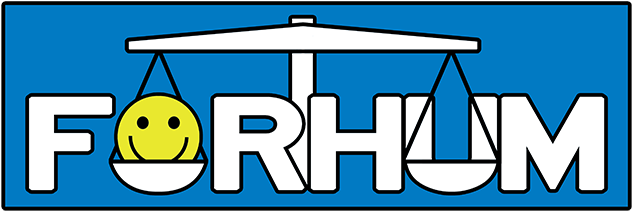
Mode of expression: Advertising Campaign
Publication: Advertising hoardings and company website
Region: Lithuania, Europe
Relevant dates: September 2012 (publication); 30 January 2018 (final decision)
Outcome: ECtHR overturns fine against advertising company
Judicial body: European Court of Human Rights
Type of law: Law on Advertising
Themes: Commercial Expression/ Public Morals/Religion
Context and Legal case
The advertising company Sekmadienis Ltd ran a campaign for a line of clothing by the Lithuanian? designer R.K. The campaign used models that seemingly depicted modern versions of religious figures. Underneath each of the models was printed a comment, including Jesus, what trousers!” (Jėzau, kokios tavo kelnės!), “Dear Mary, what a dress!” (Marija brangi, kokia suknelė!) and “Jesus and Mary, what are you wearing!” (Jėzau Marija, kuo čia apsirengę!). Four people complained to the Lithuanian State Consumer Rights Protection Authority (SCRPA). The Lithuanian Advertising Agency Commission decided that the advertisements breached the General Principles and Articles 1 (Decency) and 13 (Religion) of the Code of Advertising Ethics. It stated, “Humour is understandable, but it can really offend religious people.” A law firm contacted the SCRPA to fine the company and ordered it to remove the advertisements because they deemed them contrary to public order and public morals. The company was then informed that the ads were possibly in violation of Article 4 § 2 (1) of the Law on Advertising as being contrary to public morals, and that they had “used religious symbols in a disrespectful and inappropriate manner.”
The company responded that they had not used “Jesus” as a name but rather as a common emotional interjection. Although the models resemble religious figures, the company added, their depiction was “aesthetically pleasant and not disrespectful.” The SCRPA then asked the Lithuanian Bishops Conference for an opinion. Unsurprisingly, the bishops responded: “The degrading and distortion of religious symbols by purposely changing their meaning is contrary to public morals, especially when it is done in pursuit of commercial gain, and must therefore not be allowed, in line with Article 4 of the Law on Advertising.” The company was fined €580.
The company appealed first to the regional administrative court and then to the supreme administrative court, but both appeals were rejected. There was an application by the President of the Supreme Administrative Court to reopen the proceedings to examine if the Supreme Administrative Court had applied the substantive law correctly with regard to the right to freedom of expression, but this was refused as freedom of expression had to be balanced against public morals and it was decided that in this case public morals took priority.
The advertising agency then took the case to the European Court of Human Rights (ECtHR). They argued that their right to freedom of expression, as provided in Article 10 of the Convention, had been breached. The Government maintained that the interference with their freedom of expression was justified because the majority religion in Lithuania was Christianity and so the action had been taken to protect both morals and the rights of others. In this case it was the right of religious people not to be insulted on the grounds of their beliefs. The ad agency responded that they had merely attempted to create a comic effect by using emotional interjections commonly used in spoken Lithuanian.
The ECtHR decided that the advertisements were not offensive, and they did not incite hatred on the grounds of religious belief. Additionally it stated the domestic courts had shown insufficient reasons as to why the advertisements were judged as contrary to public morals and this was in violation of the right to freedom of expression.
Analysis
During the national proceedings, the Government of Lithuania amended the Law on Advertising, adding a provision to ban advertisements that expressed “contempt for religious symbols.” This cast a shadow over the Government’s argument that the ban was “prescribed by law” (which is one of the tests to assess whether freedom of expression can be legitimately restricted by a state authority). The ECtHR also pointed to previous case law that had established that the right to freedom of expression applies to ideas that some might consider offensive and that could “shock and disturb.” Though freedom of expression could be restricted in some circumstances, the ECtHR found, those instances should be clearly established by the national courts, which had not happened in this case.
The Court also noted that the national authorities did not address the company’s argument about the comic effect created by using the names Jesus and Mary as common emotional interjections. The target of the joke was not religion per se but rather a satirical jab at the common use of religious names among Lithuanians to express something exciting (in this instance, the new clothes range). Whilst it may have been provocative to some, the ECtHR has often pointed out that humour can be provocative. In multiple decisions it has highlighted that satire is “a form of artistic expression and social commentary and, by its inherent features of exaggeration and distortion of reality, naturally aims to provoke and agitate” (Vereinigung Bildender Künstler v. Austria, at 33).
Following the ECtHR’s judgment, Lithuanian advertising regulations on the use of religious symbols were amended in line with the European Court’s stance. Consequently, the advertisements were permitted to be used to promote the designer’s clothing line, and the “public morality” principle was removed from the Advertising Act.
Sources and further reading:
Godioli, Alberto and Young, Jennifer. 2023. Humor and Free Speech: A Comparative Analysis of Global Case Law. Columbia Global Freedom of Expression, Special Collection. DOI: https://doi.org/10.5281/zenodo.8105760
Milkaite, Ingrida. 2018. Sekmadienis Ltd. v. Lithuania: Can Religious Figures Be Featured in Commercial Advertising? Strasbourg Observers, 13 March. URL: https://strasbourgobservers.com/2018/03/13/sekmadienis-ltd-v-lithuania-can-religious-figures-be-featured-in-commercial-advertising/
